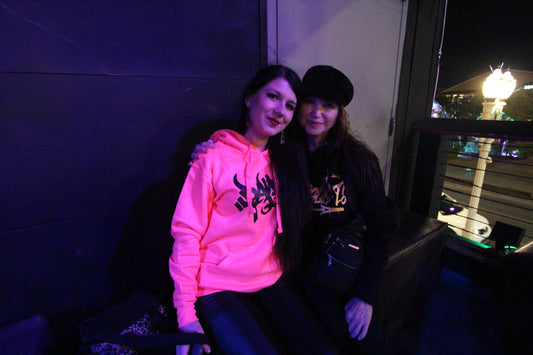
Popping vs. Locking: Understanding the Differences and Similarities
Share
Popping vs. Locking: Understanding the Differences and Similarities
Dance styles aren't just movements; they're stories told through bodies, resonating beats that transcend time. Popping and Locking, two legendary street dance forms, epitomize the rhythmic tales of urban culture, each with its flair and groove.

Introduction to Popping and Locking
Popping and Locking – words that make your feet tap and your body sway. But what do they entail? Popping involves contracting and relaxing muscles to create a jerking effect in rhythm with the music while Locking is characterized by sudden freezes and distinct poses.
Origins and History
To understand their essence, one must delve into their roots. Popping traces back to Fresno, California, in the late '70s, birthed from a fusion of various dance forms. Conversely, Locking emerged from Los Angeles in the '60s, credited to Don Campbell's invention of the lock.
Technique Breakdown
Popping's technique revolves around creating abrupt hits or "pops" in sync with the music, emphasizing isolation and control. On the other hand, Locking showcases rhythmic freezes and fluid movements, focusing on expression and theatricality.
Key Movements in Popping
In Popping, dancers master the art of "Dime Stops" and "Hits," showcasing precision in controlling muscle contractions. Styles like Animation and Boogaloo add depth and creativity to this dance form.
Signature Moves in Locking
Locking enthusiasts excel in perfecting "Locks" and "Points," emphasizing dynamic pauses and sharp poses. The whimsical "Penguin" and slick "Scoobot" moves to highlight the infectious energy of Locking.
Music and Rhythm
Music serves as the heartbeat of these dances. Popping often syncs with funk and electronic beats, while Locking thrives on upbeat, groovy tunes, accentuating their respective styles.
Performance and Expression
Popping dancers express emotions through robotic, fluid, or explosive movements, whereas Locking shines through its theatrical and playful performance style, engaging audiences with its storytelling aspect.
Popularity and Evolution
While Popping penetrated mainstream media, influencing music videos and commercials, Locking evolved into diverse substyles, maintaining its underground essence through funk music and social gatherings.
Learning and Training
Training in Popping involves mastering various techniques like tutting and waving while learning Locking focuses on drills to enhance locking and groove proficiency.
Mastering Popping and Locking requires a lot of practice and dedication. Dancers need to learn how to control their muscles to create the right effect and achieve the desired precision. They also need to develop a sense of rhythm and timing to perform the moves in sync with the music. Additionally, dancers need to be creative and innovative to add their unique flair to the dance form while staying true to the essence of Popping and Locking.
Community and Culture
The Popping community fosters camaraderie through cyphers and battles, while Locking culture embraces the "funk family" spirit, encouraging inclusivity and shared passion.
Interplay and Fusion
The dance world witnesses creative fusion as artists blend Popping and Locking, creating new styles and pushing the boundaries of expression and innovation.
Challenges and Mastery
Navigating the complexities of Popping demands muscle control and precision, while mastering Locking involves embracing improvisation and storytelling.
Popping and Locking in Media
From '80s movies to today's dance shows, both Popping and Locking have left an indelible mark in entertainment, captivating audiences with their charisma and energy.
Global Impact and Recognition
Popping gained global recognition through international competitions and workshops, while Locking found its place in global dance scenes, preserving its essence amidst cultural shifts.
What are the most popular music genres used for Popping and Locking performances?
Popping and Locking are both closely associated with funk music, but they can also be performed to other music genres. Popping often syncs with Funk, Hip-Hop, Drum N Bass and electronic beats, while Locking thrives on upbeat, groovy tunes, accentuating their respective styles. However, dancers can perform Popping and Locking to different music genres, including hip-hop, soul, and pop, depending on their preferences and the type of performance.
Conclusion
In the dynamic world of dance, Popping and Locking stand as pillars of creativity, embodying the spirit of urban culture through their distinct rhythms and movements. As these dance forms continue to evolve, their legacy remains etched in the hearts of passionate dancers worldwide.
FAQs:
1. Are Popping and Locking only for experienced dancers?
Popping and Locking cater to all levels, offering beginner-friendly classes to advanced techniques for seasoned dancers.
2. Can one learn Popping or Locking without prior dance experience?
Absolutely! Both styles welcome newcomers, fostering learning environments catering to diverse skill levels.
3. How do Popping and Locking differ from other dance forms?
Popping's emphasis on muscle control and Locking's theatrical freezes differentiate them from traditional dance styles.
4. Are there health benefits associated with practicing Popping and Locking?
Certainly! Both styles enhance flexibility, coordination, and muscular control, contributing to overall fitness.
5. Can Popping and Locking be combined with other dance genres?
Indeed! Dancers often blend Popping and Locking with various styles, creating unique fusion forms that broaden artistic horizons.






